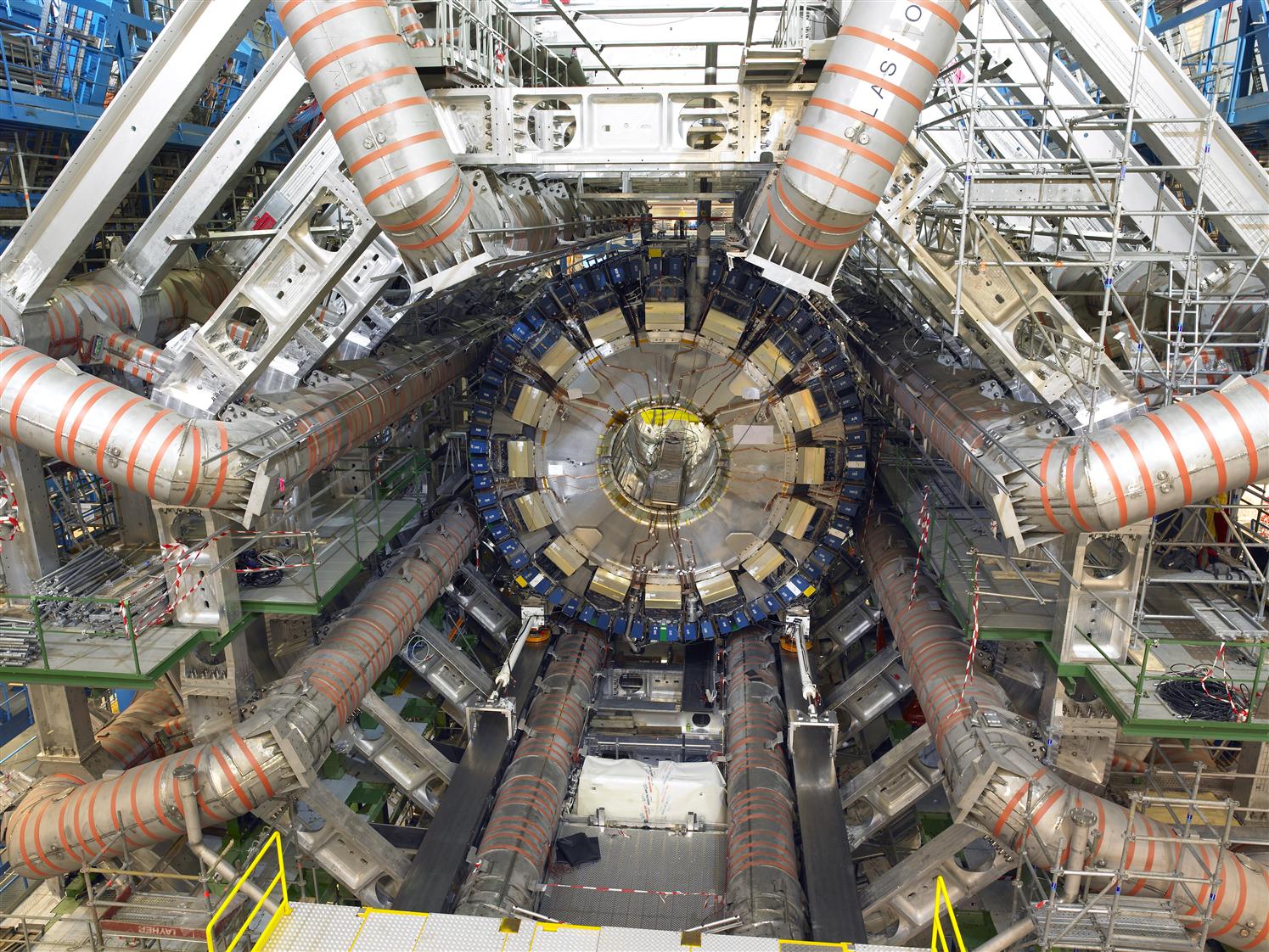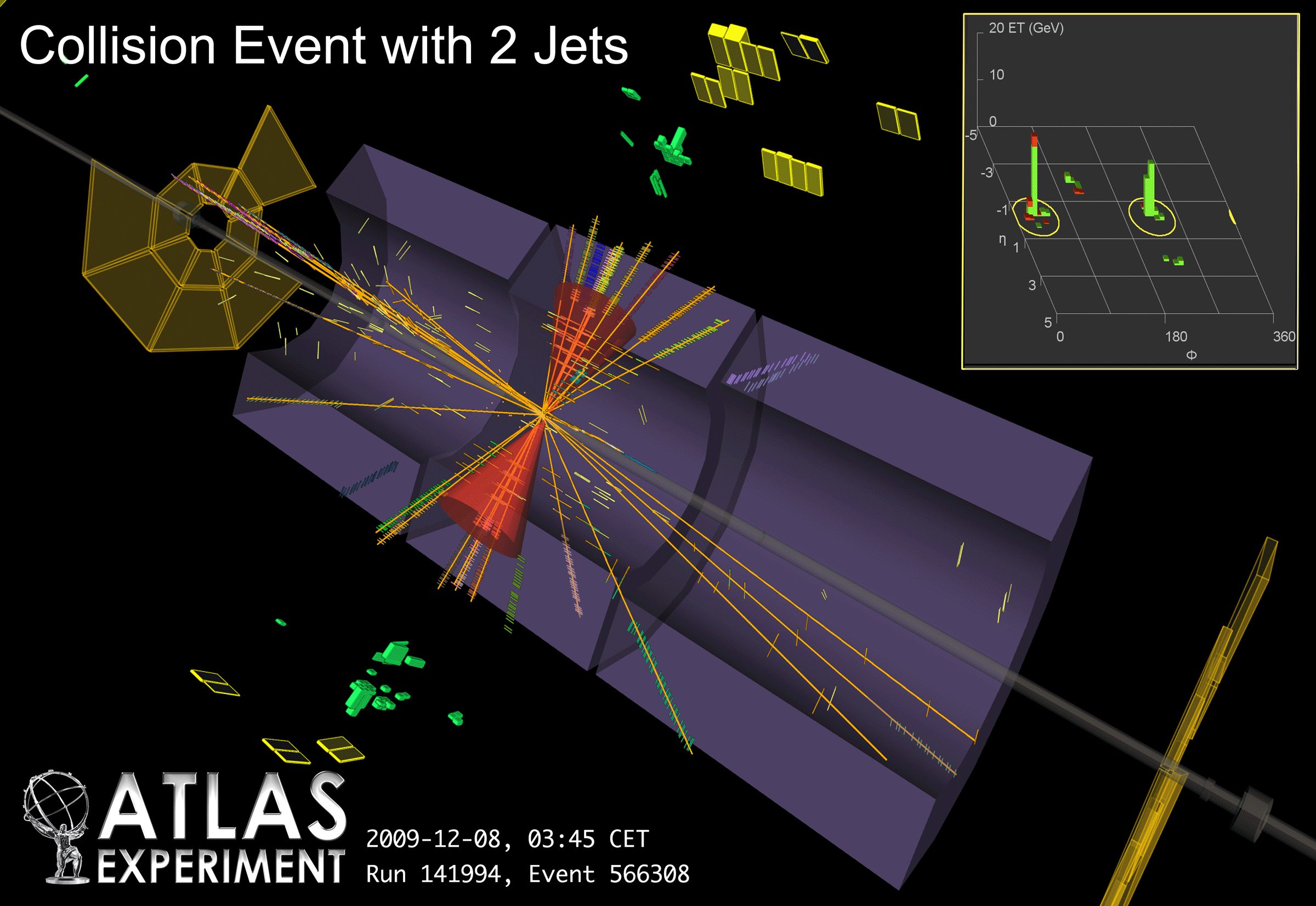Role of Argonne in the ATLAS experiment at CERN
Argonne National Laboratory High Energy Physics Division has been a collaborator on ATLAS since 1994. Standing 151 feet long, 80 feet tall and 80 feet wide and comprising more than 100 million sensors, ATLAS has earned the title of the largest particle detector ever built. As one of six particle detectors located along the 16-plus mile ring, ATLAS will identify and analyze the elementary particles emitted after a high-energy collision between two protons.

Argonne physicists have made many significant contributions to the ATLAS experiment. Our most visible contribution to the ATLAS detector has been the design and construction of the 2600 metric ton scintillator-tile hadron calorimeter, a device which is over 25ft in diameter. The calorimeter measures the energy produced after tiny atomic particles called hadrons strike the calorimeter array. The design of the calorimeter was a major engineering challenge and engineers at Argonne contributed to the design of the structure and tooling as well as conducting the majority of the engineering analysis of this self-supporting structure, which was built to exacting tolerances. Argonne physicists and engineers also contributed to a crucial component of the complicated network of data processing nodes, called the trigger, which capture the signals from the array and on the fly select the most interesting interactions, which are recorded for further analysis. Organizing these large amounts of data and making them available across the world via the GRID, is done by software developed in part by scientists from Argonne specializing in databases. The efficient access to data is a key issue when analyzing the many terabytes of data recorded to identify those few events which are, for example, consistent with the decay of a Higgs boson.

Members of the Argonne ATLAS group are working on a variety of physics topics. One such analysis is the study of processes which result in closely spaced depositions of energy in the calorimeter (jets). Such types of events are studied to determine if their shapes and other characteristics indicate that they are produced by processes not described in the Standard Model, for example, from new heavy particles or in a process involving extra-dimensions or quark compositeness. Another topic being studied by members of the group comprises physics processes which result in either a single or a pair of high energy photons in the detector. The goal is to compare the characteristics of these events to the expectation from the Standard Model--an essential comparison since pair production of high energy photons is one of the clearest signatures for Higgs production. We also participate directly in searches for the Higgs boson, pursuing analyses to look for Higgs decays to W bosons, photons, b quarks and boosted objects.
Argonne also hosts one of three Analysis Support Centers in the United States and here we support ATLAS physicists from area US Institutes, including Northern Illinois Univerisity, University of Chicago, Iowa State University, University of Oklahoma, University of Wisconsin, Michigan State University and Duke University. We currently host 15 long-term visitors from the area universities who cooperate with us in the analysis of ATLAS data as well as in the operation of the detector. We aslo host periodic regional meetings for ATLAS. We offer computing resources for ATLAS analysis, physics analysis expertise, software consultation, meeting and office space for visitors, and a dedicated video conference facility. From our group, Tom LeCompte has held the key position of ATLAS Physics Coordinator as well as convener of the ATLAS Standard Model physics analysis group.